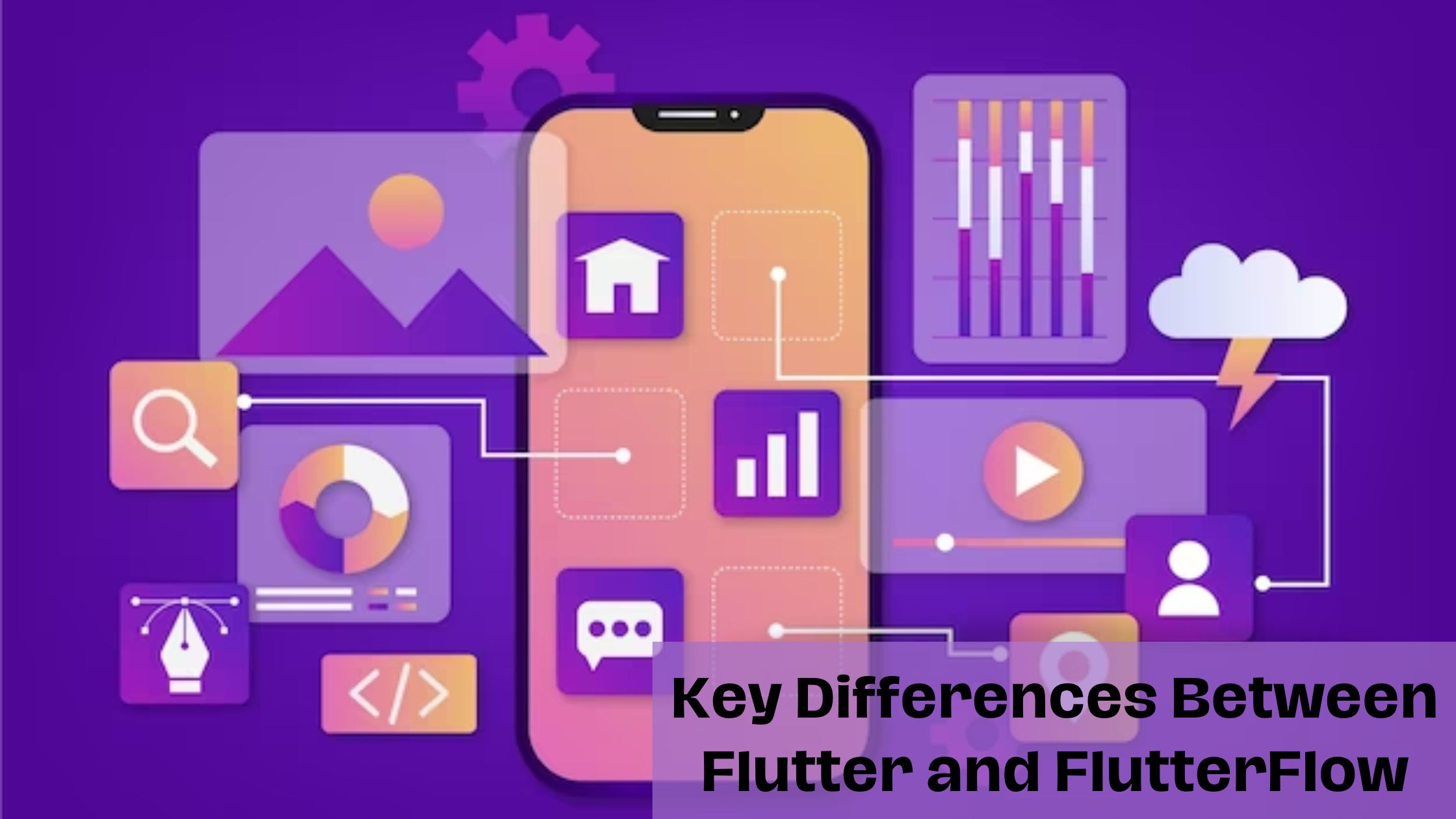
Exploring the Key Differences Between Flutter and FlutterFlow: Choosing the Right Framework for Your Project
In the ever-evolving landscape of mobile app development, developers are constantly on the lookout for tools and frameworks that can streamline their workflow and enhance the overall development experience.
Flutter and FlutterFlow are two popular frameworks that have gained significant attention in the realm of cross-platform app development. While both are related to Flutter, they serve distinct purposes and cater to different needs.
In this blog post, we’ll delve into the key differences between Flutter and FlutterFlow, helping developers make informed decisions when choosing the right framework for their projects.
Understanding Flutter
Flutter is an open-source UI software development toolkit created by Google. Launched in 2017, it has gained traction rapidly due to its ability to enable developers to build natively compiled applications for mobile, web, and desktop from a single codebase. Flutter utilizes the Dart programming language, providing a reactive framework that allows for a smooth and expressive UI design.
Flutter is renowned for its hot reload feature, allowing developers to instantly see the effects of code changes without losing the app’s state. This significantly speeds up the development process and enhances the overall developer experience. Flutter’s rich set of customizable widgets, along with its support for Material Design and Cupertino, empowers developers to create visually appealing and platform-consistent applications.
Key Features of Flutter:
Single Codebase: Flutter allows developers to write code once and deploy it on multiple platforms, reducing development time and effort.
Hot Reload: The ability to see real-time changes in the application during development without losing the app’s state accelerates the development cycle.
Rich Widget Library: Flutter comes with a comprehensive set of customizable widgets that enable developers to create versatile and visually appealing user interfaces.
Dart Programming Language: Flutter uses Dart, a language that compiles to native code for optimal performance. Dart is easy to learn for developers familiar with object-oriented programming.
Community Support: Being backed by Google, Flutter has a strong and growing community that actively contributes to its ecosystem.
Understanding FlutterFlow
FlutterFlow, on the other hand, is a visual development platform built on top of Flutter. Launched in 2020, FlutterFlow aims to simplify the app development process by offering a low-code approach. This means that developers can create applications by visually designing the UI and logic, reducing the need for extensive coding. FlutterFlow’s interface is intuitive and user-friendly, making it accessible to both experienced developers and those new to app development.
Key Features of FlutterFlow:
Visual Development: FlutterFlow allows developers to design the UI and logic of their applications visually, reducing the reliance on traditional coding.
Pre-built Components: FlutterFlow comes with a variety of pre-built components and templates that developers can use to speed up the app development process.
Integration with Flutter: While FlutterFlow provides a visual development interface, it is built on top of Flutter, allowing developers to add custom code when needed for more complex functionality.
Real-time Collaboration: FlutterFlow supports real-time collaboration, enabling multiple team members to work on the same project simultaneously.
Cross-platform Deployment: Just like Flutter, FlutterFlow enables the deployment of applications on multiple platforms from a single codebase.
Key Differences Between Flutter and FlutterFlow:
Coding vs. Visual Development:
Flutter: Primarily relies on traditional coding using the Dart programming language. Developers write code to define the UI and logic of the application.
FlutterFlow: Emphasizes visual development, allowing developers to design the application by dragging and dropping components on the canvas. Coding is still possible for custom functionality.
Learning Curve:
Flutter: Developers using Flutter need to be familiar with Dart programming, which may have a learning curve for those new to the language.
FlutterFlow: Designed to be more accessible, FlutterFlow reduces the learning curve by providing a visual interface. Developers with minimal coding experience can still create functional applications.
Flexibility and Customization:
Flutter: Offers complete flexibility and customization through code. Developers have fine-grained control over every aspect of the application.
FlutterFlow: While it provides an extensive set of pre-built components, customization is possible through code, offering a balance between visual development and traditional coding.
Development Speed:
Flutter: The hot reload feature and extensive widget library contribute to a fast development cycle in Flutter.
FlutterFlow: Visual development and pre-built components can speed up the development process, especially for simpler applications. However, custom code may be required for more complex features.
Team Collaboration:
Flutter: Collaboration in Flutter relies on version control systems and traditional development workflows.
FlutterFlow: Supports real-time collaboration, allowing multiple team members to work on the same project simultaneously within the platform.
Community and Ecosystem:
Flutter: Backed by Google, Flutter has a large and active community, along with a robust ecosystem of packages and plugins.
FlutterFlow: As a newer entrant, FlutterFlow’s community is growing, but it may not be as extensive as Flutter’s community. However, it benefits from the broader Flutter ecosystem.
Choosing the Right Framework for Your Project
The decision between Flutter and FlutterFlow depends on various factors, including the nature of your project, the skillset of your team, and your preferred development approach. Here are some considerations to help you make an informed choice:
Project Complexity:
Simple Projects: For smaller or less complex projects, FlutterFlow’s visual development approach can be advantageous, allowing for rapid prototyping and development.
Complex Projects: For larger or more complex projects requiring extensive customization, Flutter’s flexibility and control through code may be preferable.
Development Team Expertise:
Experienced Developers: If your team is composed of experienced developers familiar with Dart and traditional coding, Flutter might be the more natural choice.
Visual Designers or New Developers: If your team includes individuals with expertise in visual design or minimal coding experience, FlutterFlow’s low-code approach may be more suitable.
Development Speed and Iterations:
Rapid Prototyping: If your goal is to quickly prototype and iterate on design concepts, FlutterFlow’s visual development can expedite the process.
Fine-tuned Control: If your project requires fine-tuned control over every aspect of the application, Flutter’s hot reload and coding capabilities may provide a faster development cycle.
Collaboration Requirements:
Real-time Collaboration: If your team values real-time collaboration and simultaneous contributions, FlutterFlow’s platform with collaborative features may be beneficial.
Traditional Workflow: If your team is accustomed to traditional version control systems and workflows, Flutter’s development process may align better with your preferences.
Long-term Maintenance:
Code Maintainability: If long-term code maintainability is a priority, Flutter’s traditional coding approach may offer more clarity and ease of maintenance.
Visual Development Artifacts: While FlutterFlow generates code from visual designs, long-term maintenance may require familiarity with both the visual and code aspects of the project.
Conclusion
whether you choose Flutter for its coding flexibility or opt for FlutterFlow’s visual development simplicity, the decision should align with your project’s needs and your team’s expertise. If you’re looking to bring your vision to life, considering to hire Flutter app developers is essential.
With their skills and experience, you can ensure a seamless development process and deliver a high-performance app that meets your specific requirements. Choose the right framework and the right team to unlock the full potential of your mobile application.



